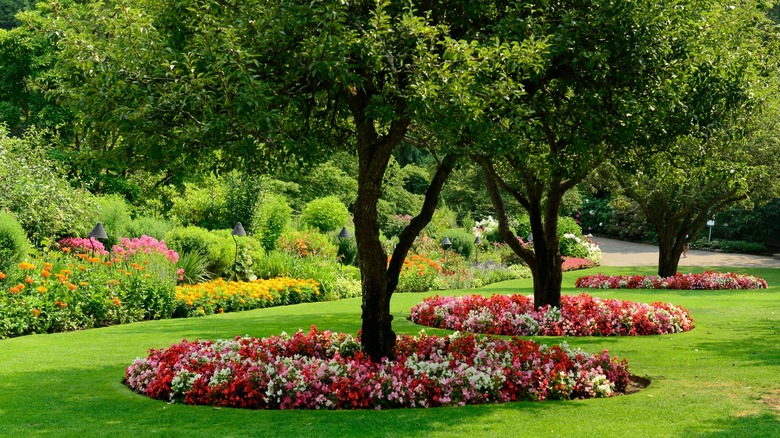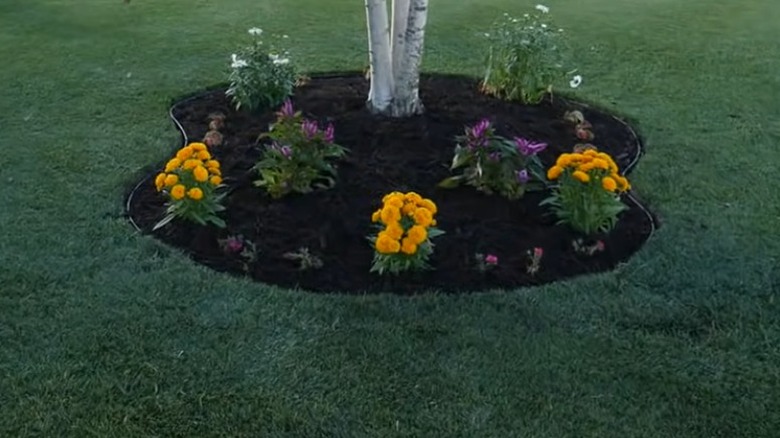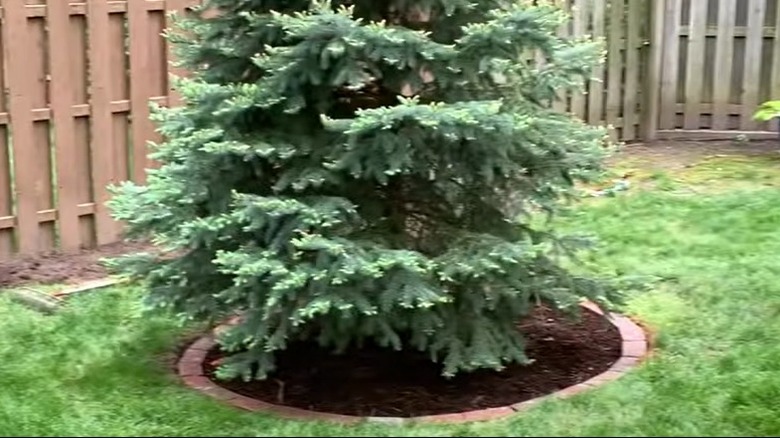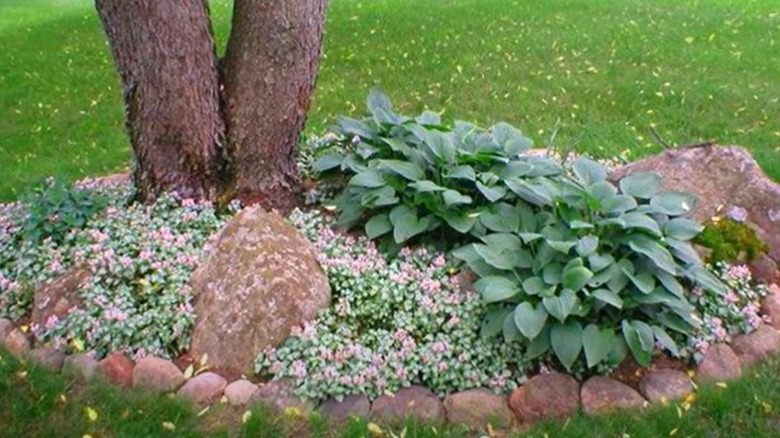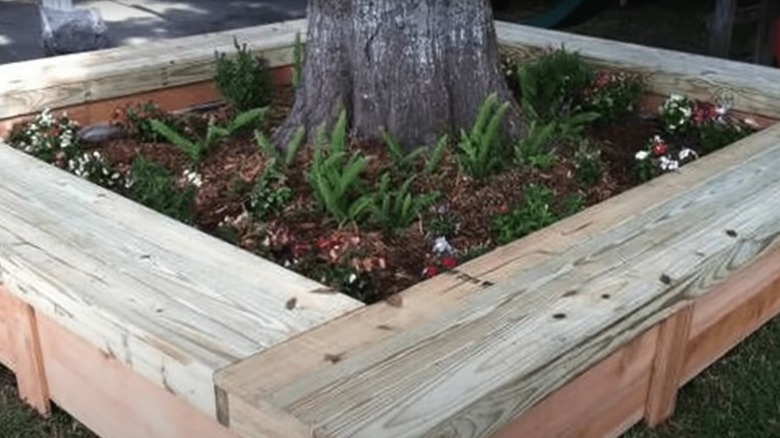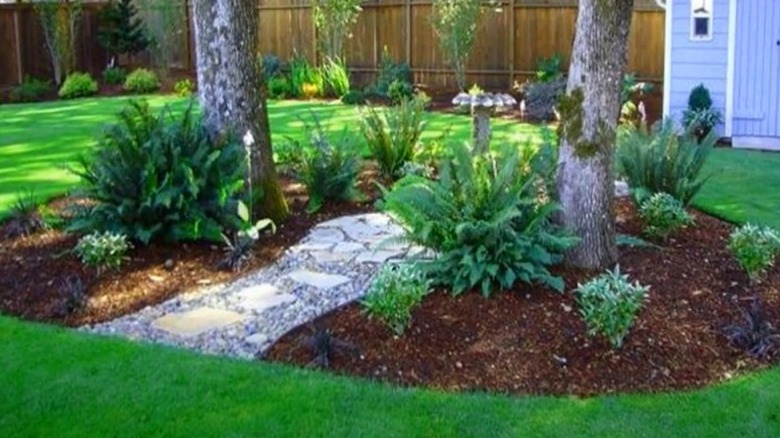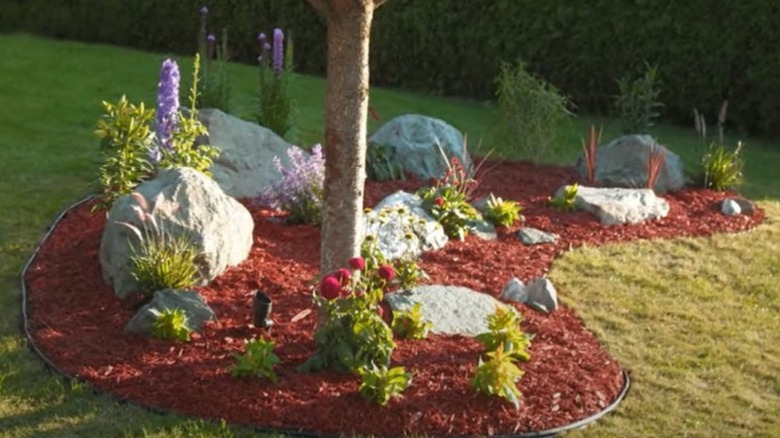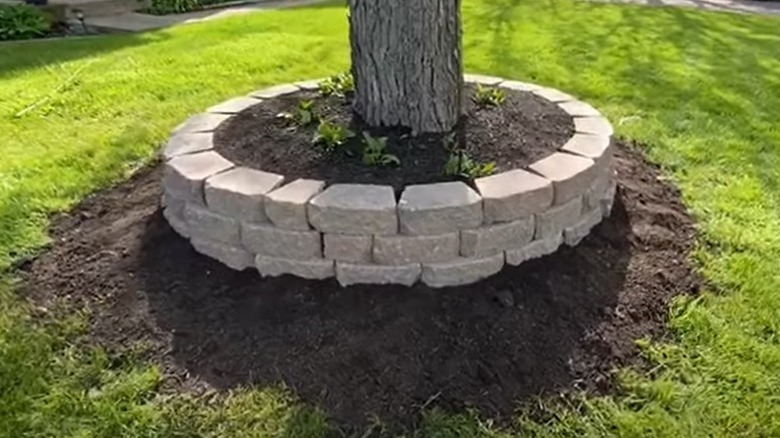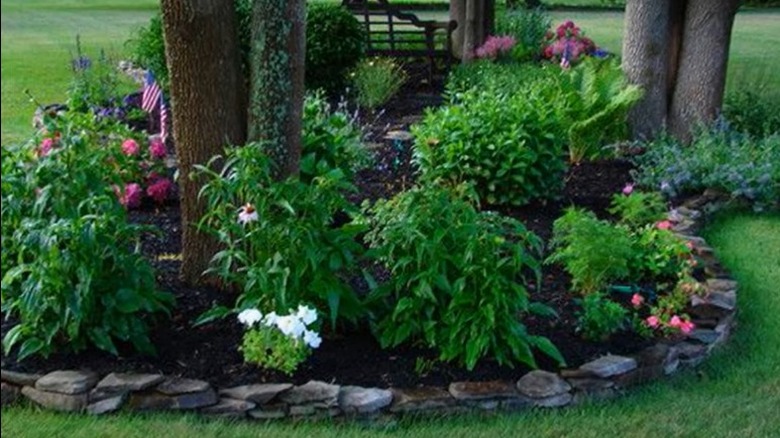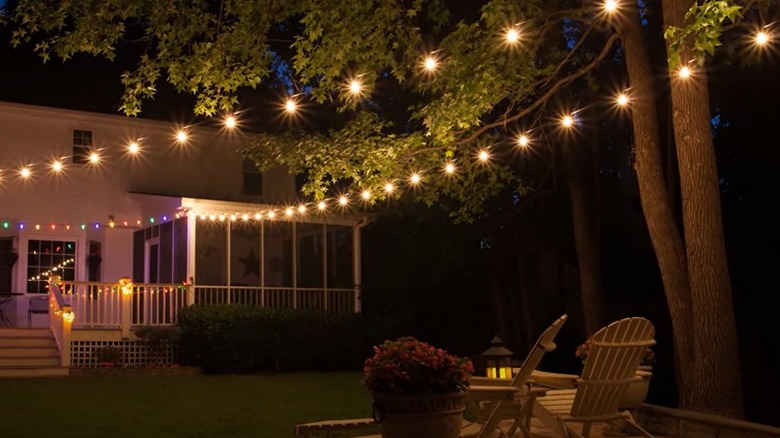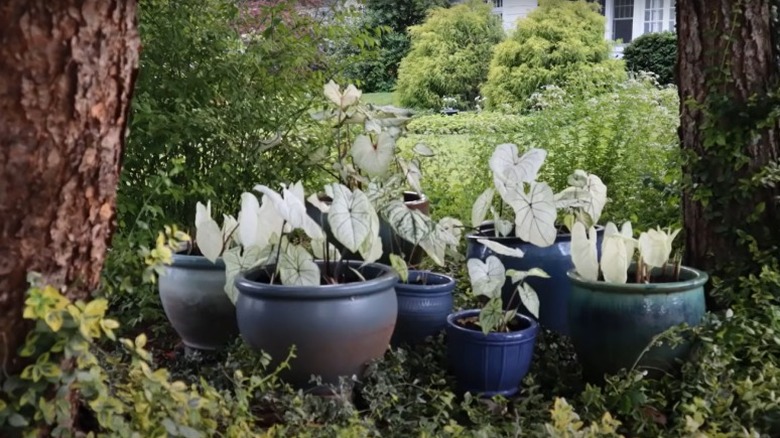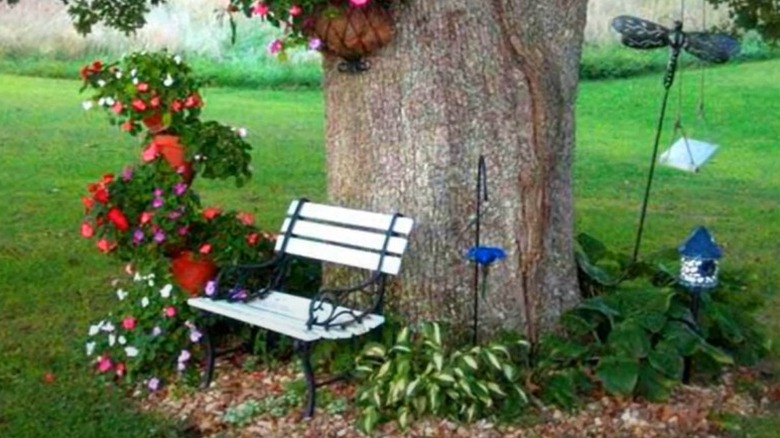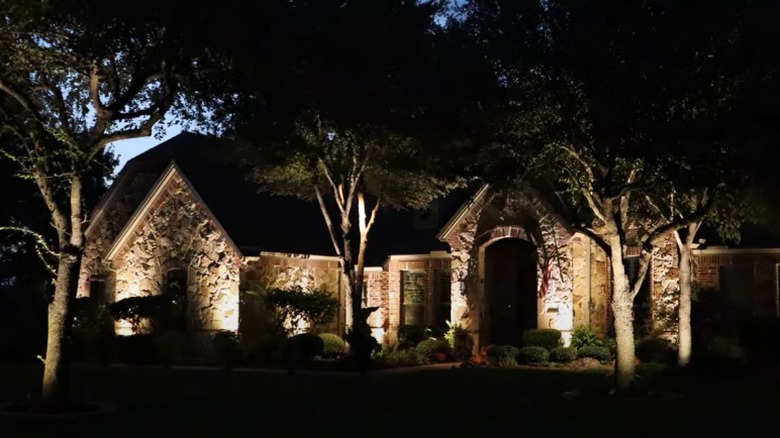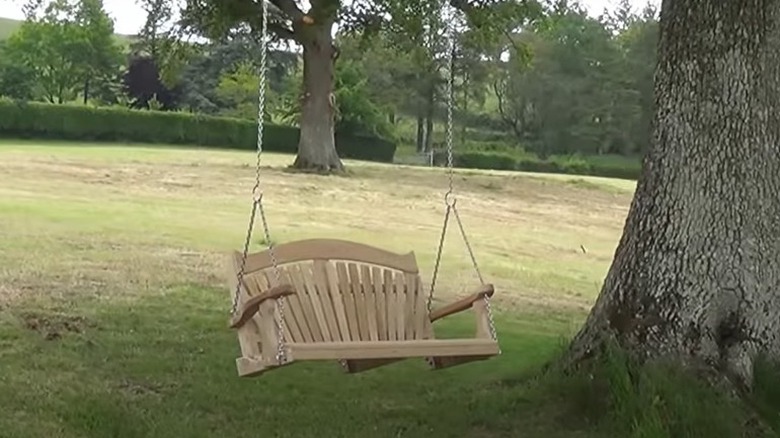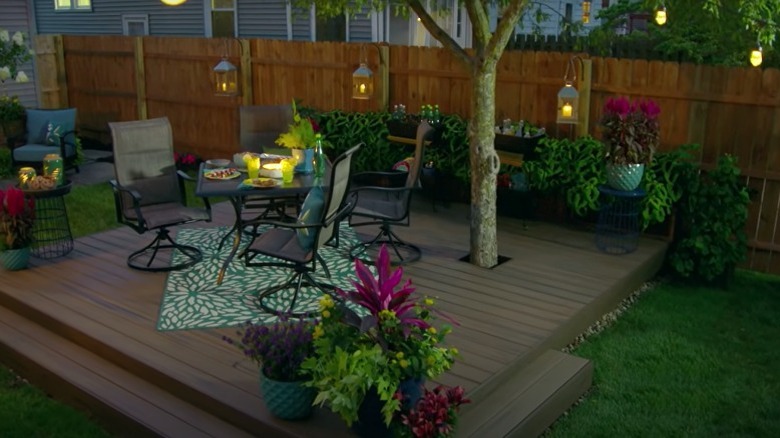How To Use The Existing Trees In Your Yard To Enhance Your Landscaping
Maintaining a yard comes with its challenges; however, having greenery to deal with is a happy circumstance, as many homeowners don't have this additional space. If your yard includes trees, that's even better. In addition to providing natural shade, they open doors to gorgeous landscaping layouts and can function as the ultimate design feature. Moreover, Heartland Landscape Group suggests that cleverly conceived landscaping reduces energy costs and improves air quality. Yet, mature trees, particularly those with large-sized roots, can be difficult to tame. These require a lot of water, and the heavy shade prevents sun rays from penetrating below the canopy. As a result, you'll probably end up with a barren land empty of life and a poor ecosystem you can't diversify.
So, how do you invigorate your lawn and ensure perfect landscaping in the yard? Consider the tree types you are growing and focus on those that thrive in the environment. Before you start getting to work, it's also crucial that you have an understanding of how much sunlight passes through the branches and leaves. Considering these aspects will improve your property's appeal and add color and texture to the outdoor space. Check out our ideas on how to use trees to your benefit and take your landscaping to the next level.
Work around the base
Starting with the base of the tree makes for the least demanding landscaping project. Many plants can easily thrive under the shade and on less water. Since this doesn't apply to all foliage, ensure the varieties you have in mind can live without too much sun and moisture before planting. The most efficient approach is to decorate the tree base with mulch, various rocks, and plants that survive in shady areas.
Chron suggests getting kaempferias because these flowers are the most resistant to areas exposed to these unfavorable conditions. Moreover, their upkeep doesn't require much work as pests rarely attack them. Homeowners prefer kaempferias because of their statement-making greenery and flowers that have been said to resemble those of orchids. In addition, consider drought-tolerant plants like succulents and ground covers. Also, shade-loving perennials such as hosta, primrose, and foxglove are ideal for a low-light garden (via Blooming Backyard). Finally, homeowners who prefer versatility can opt for ferns, bulbous and tuberous plants, grasses, and shrubs (via Royal Horticulture Society).
Get creative with tree rings
Most landscaping ideas include building a ring around the tree trunk. The good news about this hack is that you have endless options. For instance, you may choose to construct the ring out of rocks, concrete, bricks, cinder block, or pavers. However, regardless of the material you pick, ensure it allows the tree to develop naturally without compromising its health.
When building the ring, make it at least eight inches away from the tree trunk. Instructables shares a tutorial on using templates to create concrete tree rings. First, you need to cut the patterns out of wooden boards. Next, add concrete and let it sit for 24 hours before using. The best thing about this project is that you can personalize the rings. Once your ring is set up, fill the inner part of the tree ring with mulch. According to DoItYourself, besides embellishing your overall landscaping, mulch promotes plant growth and tree health. When spread over the ground, mulch acts as a protective covering and natural fertilizer. Plus, it conserves moisture, prevents erosion, and stops weeds from growing.
Cover up protruding tree roots
Many homeowners don't like exposed roots because they don't look appealing and pose a tripping hazard. Moreover, massive roots above the ground aggravate your mowing attempts and make the yard look messy. Therefore, working around the existing tree roots may be a wise idea. But how do you deal with this problem? The tree will most likely suffocate and die if you cover or, even worse, cut off its feeding source.
Root pruning is off limits because the tree will lose its stability and, if done wrong, it may even kill it. Therefore, you might want to leave this procedure to a professional service and use it only as a last resort solution, advises The Practical Planter. The safest roots to cut are those at least one foot away from the trunk and less than two inches in diameter. Alternatively, try ground cover plants to hide the exposed roots without damaging them. When these species grow, they will cover the roots and look beautiful without smothering them.
Build a raised garden bed under a tree
Have you always been fond of raised planters? If yes, use this chance to get active and make your long-wished-for landscaping dream come true. Besides bringing rich aesthetics to the outdoor area, raised garden beds are super convenient for upkeep. Plus, a stylish raised bed will transform that bare area under a tree into an attractive feature.
Consider building a basket or wall at the tree base and incorporating a garden within it for a unique look. In addition to using the available space intelligently, you will avoid the tree's roots and keep them healthy. According to Plant Perfect, the raised plant bed should be at least six inches deep. Wood is the perfect candidate for constructing durable and authentic garden boxes, just be sure to use untreated wood if you plan on planting vegetables within your box. Experienced horticulturists suggest using cinder blocks for landscaping abound tree bases (via Gardeners' World). You can also use these blocks to section off areas or create a layered look in the garden.
Weave in impressive pathways
Creating walkways between different trees or sections of the yard is an excellent landscaping project. Besides adding visual interest to the place, this idea is practical for muddy conditions and beneficial to the plants growing around it. The path will also shape and define your garden by connecting unrelated parts into a coherent whole. Use anything from boardwalk planks to paver stones and bricks for the walkway. Similarly, try landscaping rocks for pathways to and from trees. Just Measuring Up shares detailed guidelines on constructing a wooden backyard walkway. Once you build it, add colorful flowers and lush greenery on the sides for added impact.
If you're working around massive roots, space out pavers or stones to create an easily adjustable pathway. Besides being an affordable solution, you can recreate the path as the seasons change. Moreover, gravel and crushed stone are excellent choices because they allow for easy draining, and are also affordable (via This Old House). Brick paths are another viable solution because of their ability to fit countless designs, including the herringbone pattern.
Scatter rocks around trees
Perhaps you've already tried to populate the tree base with plants, but all your attempts have ended in disaster. Fortunately, not all hope is lost for a mesmerizing garden landscape. Besides low-profile, shade-loving greenery, you can spruce up the base area with rocks. Alternatively, you might want to use bricks to improve the garden layout.
Though rocks are a perfect choice for the base, using them correctly is vital if you want to preserve the tree for as long as possible. When placing your rocks, be sure to leave at least three inches of soil around the trunk unpopulated, suggests Plant House Aesthetic. Otherwise, without proper air flow, the tree could rot. And if you're worried that rocks in general will endanger the tree, don't worry, because that's not the case. As long as you don't crowd the plant and spread only a thin layer, there's nothing to worry about (via GFL Outdoors).
Consider building a retaining wall
Does your property contain a slope and you don't know what to do with it? Build a retaining wall and enhance the visual appeal and texture of the place. In addition, stone retaining walls are easy to construct because you don't need to use mortar or concrete footing. Get stones such as fieldstones and flagstones, and you're ready to rock.
This may be a fit of physically demanding project, but there are great benefits to having a retaining wall. New Life Rockeries explains that besides preventing soil from eroding and interfering with the rest of your yard, retaining walls also prevent flooding. Plus, they protect other parts of your yard from thing that might damage them. Finally, retaining walls are exceptional decorative features that require very little maintenance (if they're built properly), and can reduce the need for maintenance in other parts of your yard as well. If you don't think you'll do a good enough job building a retaining wall yourself, it's best to bring in professionals.
Grow tiny gardens between trees
Suppose you have two or three trees in a series. How do you make the most out of the distance between them? If this space is small and you can't do anything with it, consider planting a few flowers in a unique layout. However, you can't just pick flowers at random. You must follow some simple rules to make a coherent garden that looks stunning and actually holds up.
The worst-case scenario is to have an empty area under and near pine trees. The heavy shade and the highly acidic soil beneath them make it impossible for most plants to thrive. If this sounds familiar, there is a solution to your concern. Backyard Scape suggests planting perennials like azaleas, lily of the valley, hydrangeas, Jacob's ladder, and columbines. For maximum visual impact, consider combining plants by color, size, and shape. One approach is to pick different flower types in a similar shade, but at various heights, to create a unified feel (via Gardeners' World). Alternatively, stick to two or three bold colors and plant ornamental grasses in between to soften the scheme. For example, go with yellow, blue, and purple, and add some dark foliage to contrast the landscape.
Add string lights to branches
Don't limit your decorating options to just the area under the trees. Think along the lines of string lights to incorporate into the canopies. These add-ons will enhance your garden by providing a soothing ambiance you can enjoy during summer nights. What's also great is that string lights don't cost a fortune and they're also super easy to find.
String lights can go virtually anywhere around the property where you need extra light and a whimsical touch, including between tree branches. For outside use, be use to purchase lights that can get wet, advises Build with Ferguson. The site also shares a step-by-step guide on installing string lights from scratch. Essential materials for this include guide wire, screw hooks, open hooks, zip ties, cable clips, and wall anchors. Using existing trees to build ultimate lighting layout is the most straightforward option. In the process, choose removable and shatterproof bulbs to ensure safety for everyone sitting beneath the tree (via Proline Range Hoods). Recommended designs to make your starry sky memorable include parallel, square, tent, V, and W-shaped lines.
Take a different path with container gardening
Another ingenious hack is container gardening. Since digging into the soil under trees is often problematic, this solution will give you more control. In short, you can arrange the flowers in containers however you like, and move them around depending on the season and the need for sunlight. This idea is exceptional for shaded areas and harsh climates. Moreover, since some trees are less agreeable about giving up their ground, planting containers will save you a lot of worries. According to Fine Gardening, species like beeches, oaks, cherries, plums, magnolias, larches, sugar maples, and dogwoods don't like getting disturbed. To win the game, consider using pots and planters instead.
This approach will allow you to move your flowers into a protected area during colder months. Then, when the weather is more favorable, take them back outdoors. However, ensure you use high-quality porous soil for the containers (via Gardening Stuffs). Potted plants also need excellent drainage, so pick containers with holes in the bottom. As for material, wood, metal, fabric, and plastic are all solid choices.
Throw in a bench or two
The best way to make the most of a large shaded area under a tree is to add a bench where you can sit and unwind. Plant a few bushes or flowers that thrive in shady areas, and you'll make a perfect reading nook in the garden. You might even use the shaded seating to chat with your guests. Add some decorative rocks or mulch in between to finish the look. To do this, start by leveling the area for the bench – its durability depends on this step. If you decide to buy one, go for a concrete, wooden, or stone piece since these materials blend perfectly in a natural environment, claims Ezine Articles. Wrought iron and stainless steel with flowery designs are alternatives for a more contemporary outdoor setting.
Many people may choose to DIY a bench. The critical thing is to leave the tree undamaged and create a nice, relaxing spot to find your peace after a busy day at work. Today, benches that wrap around the tree trunks are the most popular (via Fine Woodworking). If you're planning to construct one yourself, you'll need extra thick treated or cedar decking, screws, and rudimentary tools. Once you finish the structure, seal and stain the wood to prevent the bench from wearing out quickly.
Don't forget night lighting
Make sure your hard work doesn't just go to waste when the sun sets. Naturally, you intend to use the backyard you styled in the evenings and not only during the daytime, anyway. Hence, consider adding night lighting below your tree and turn the space into a relaxation hideaway. Use solar lighting to make the most out of natural sunlight and cut energy costs. Solar spotlights are the best option — according to The Solar Advantage – just make sure the solar panel is exposed to direct sunlight. Alternatively, install electric landscape lighting. Whatever your choice, these will illuminate the areas around the trees and become the perfect finishing touch to your yard.
You can choose to uplight or downlight the yard, depending on your preferences and desired look. Uplights have a more dramatic look that really highlight your trees, while downlights are a bit more soft and welcoming (via Kichler). It is also critical to pay attention to the number of accents you place and their positioning angle for maximum impact.
Make magic with a hanging chair
Massive trees carry a sense of grandeur, antiquity, and timeless value. So, why neglect that old beauty when you can install a charming hanging chair under its canopy, and transform the yard into a fairytale location? You can finish this project over the weekend, provided you have all the necessary tools.
The swinging chair will become the focal point of the yard. However, ensure your safety by selecting a high-quality piece that can endure harsh weather. Fischer suggests finding a secure branch that's stable enough to withstand swinging, ideally over fairly even ground. Installing the swing at the right height is also vital — you don't want it to be so high that you have to jump into it, or so low that you're almost scraping the ground. Another less complex alternative is a teardrop hanging chair. It is comfortable, safe, easy to install, and kids will love it (via Swings for Trees). All you need to hang it are rope and a stainless-steel carabiner.
Add a deck
What can you do with a large, healthy tree in the backyard? Use its wide-spreading limbs as the perfect shade and build a deck around the tree trunk. By doing so, you can enjoy the yard spot that would otherwise be barren and unused. However, this project requires advanced technical skills and proper tools, so be sure to come prepared.
Building a deck or patio around a tree is no small feat. Above all, you must consider the tree's health, roots, and expected growth over time. If you're inexperienced in engineering, Decks.com offers an excellent guide on building a tree-encompassing deck from scratch. The benefits of an elevated wood deck include reducing foot traffic on soil under trees, improved water and air access to the roots, and less soil compaction around the root area (via Quora).
